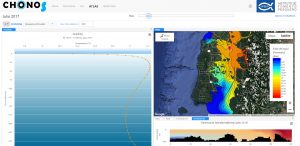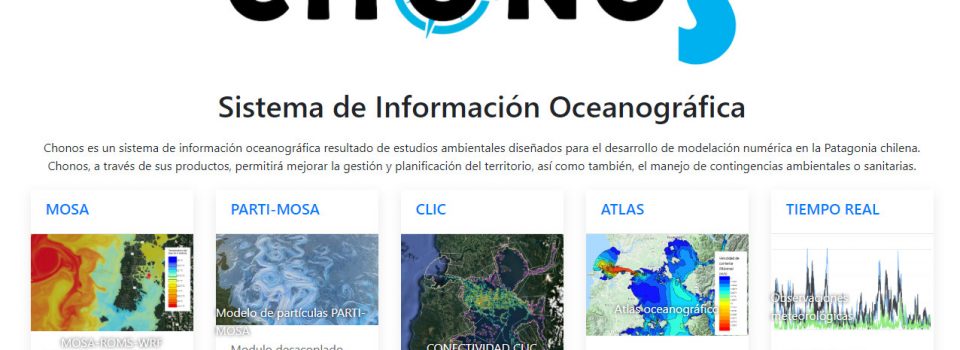CHONOS oceanographic monitoring website is modernized by IFOP
June 15th, 2019
Fisheries Development Institute (IFOP) is celebrating CHONOS re launching, a web portal which hosts southern Chile oceanographic information system (available for free use at www.ifop.cl/chonos). This new version of CHONOS maintains its public role of serving as a source of oceanographic information to government users and the general public. It has significant improvements in the previously existing tools: MOSA, parti-MOSA and CLIC, to which the new ones are added ATLAS and Real-Time
Luis Parot Donoso IFOP executive director highlighted “Fisheries Development Institute fulfills a public role of excellence, which is why this oceanographic monitoring website is available to all people who want to use it, it is free and easy to access. We are very proud of these advances on our web page since, it is the product of hard work performed by IFOP great professional team ”
Web page applications
ATLAS is a historical data explorer based on hydrodynamic modeling of oceanographic variables such as currents, temperature, salinity (and derivatives of these as water renewal, stratification, etc.) in hourly data and monthly averages. In the words of Elías Pinilla, IFOP researcher “ATLAS allows us to condense the enormous amount of information derived from our numerical models into simple spatial and temporal datasets that can be used by any user”.
On the other side, Real-Time allows to visualize graphs of atmospheric variables that are updated hourly (speed and direction of the wind, atmospheric pressure, precipitation, etc.) from IFOP weather stations at Los Lagos region, from Reloncaví to Melinka .
MOSA-ROMS: 3 days Oceanographic forecast operational model from Los Lagos region and Aysén Region; it has incorporated atmospheric operational forecast MOSA-WRF visualiation offering a wide spectrum of atmospheric variables for consultation, such as wind speed, air temperature, humidity and precipitation. For Oliver Venegas, IFOP researcher and responsible for atmospheric modeling, “it is a great achievement to implement the high resolution atmospheric forecasting system MOSA-WRF, since it will allow us to have a better and more detailed knowledge and prediction of the atmospheric patterns of North Patagonia, which in turn will help improve oceanographic prediction. ”
Parti-MOSA: Particle dispersion predictions for Los Lagos and Aysén Region have increased particle driftst prediction from 3 to 10 days forward, which, according to Osvaldo Artal, IFOP researcher at Castro, “will allow To deal with health situations, polluting or maritime safety and rescue emergencies in advance. ”
Finally, CLIC connectivity tool has significantly improved the resolution, allowing us to know how particles are transported through marine currents between different areas. You can choose between passive particles or provide these particles with response to environmental conditions, so that they can simulate dispersions of various inert or biological agents (such as sea lice that affect salmon farming).
Simultaneously IFOP is announcing CHONOS new version through workshops at users request. These have taken place in Coyhaique (May 14, Aysén and Magallanes Environmental Assessment Service), Castro (May 23, Technological Institute of Mitilicultura) and Valparaíso (June 4, University of Valparaíso and June 5, Fishing Promotion Institute ).
